Canon AE-1 Program - Jumping into the World of Film
On a whim back in 2018 I purchased a Canon AE-1 Program and dived into the world of film photography.
About seven years ago, I purchased my first film camera on a whim: a nearly 40 year old Canon AE-1 Program, complete with a rather dingy 50mm prime lens. A few days before I was admiring the work of a few photographers who shot primarily - or exclusively - with film, and decided that I would find myself a camera and try my hand at the medium. So when I stumbled upon this well worn Canon at a local antique shop, I had no second thoughts about purchasing the camera for fifty dollars. Sure, it was covered in plenty of irremovable grime, the lens was full of debris, and the film advance lever (I had no idea what that even was at the time!) was badly cracked, but I couldn’t have cared less. The main functions of the camera, such as the shutter and light meter, seemed functional and I was more than ready to begin shooting film.
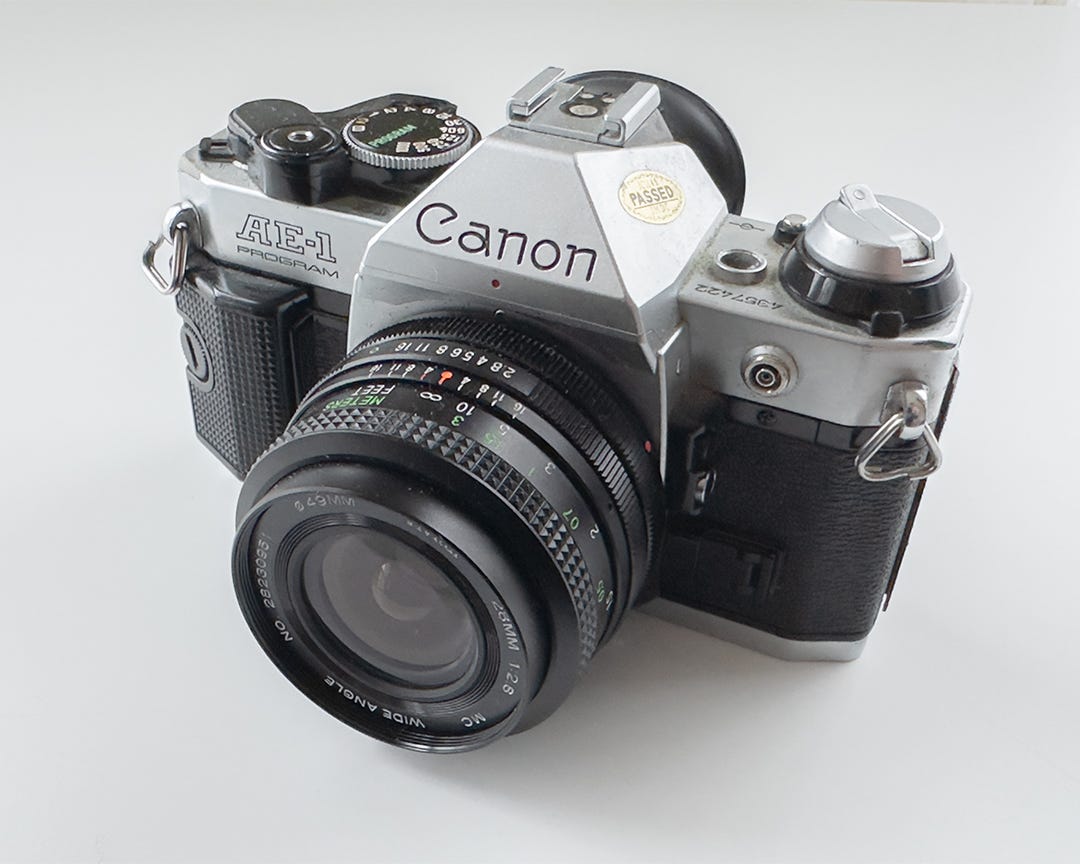
I ordered a few rolls of 35mm film and anxiously awaited the first opportunity to use the camera out in the field. A few weeks later, that moment arrived. I took the camera with me on an all-day boat cruise out of Bar Harbor where we saw 19 lighthouses and some beautiful views of Maine’s Mid-coast islands. The experience was fantastic, even though I was unsure if I was correctly operating the manual focus lens. As I walked off the boat I was excited to get the images developed. However as the busy summer season continued, the undeveloped roll, along with the camera, sat on the shelf and I soon forgot about it.
Come the next spring, I pulled the camera back off the shelf remembering the fun I had on that cruise and decided I need to give the camera another run. I still had not developed the film at this point, so I found a local developer and sent it off. As I awaited the return of my film, I decided to have a look around on the used camera market where I found a couple of zoom lenses that would allow for more creativity, especially when I’m out on the water. A few days later a Canon FD 35-105mm and 100-300mm lenses were in hand, and I was once again ready to photograph the world on film.
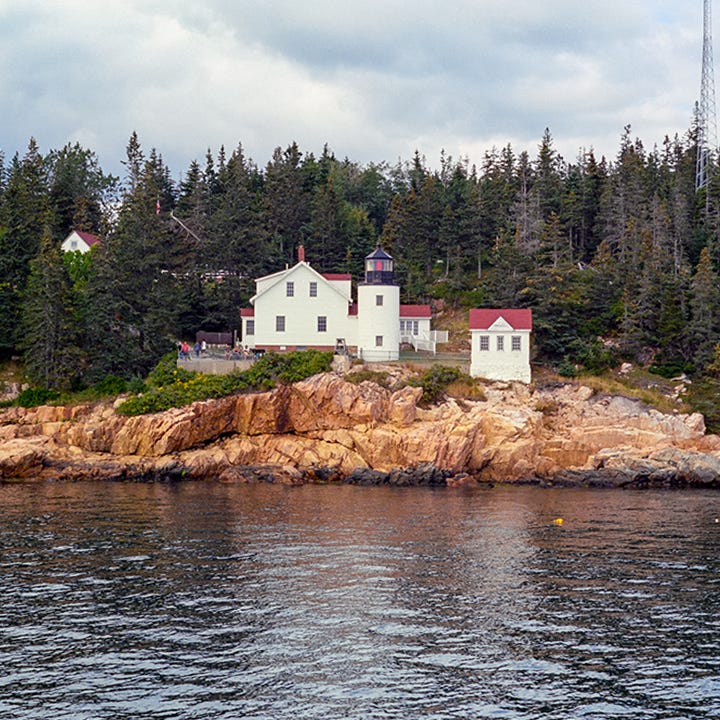
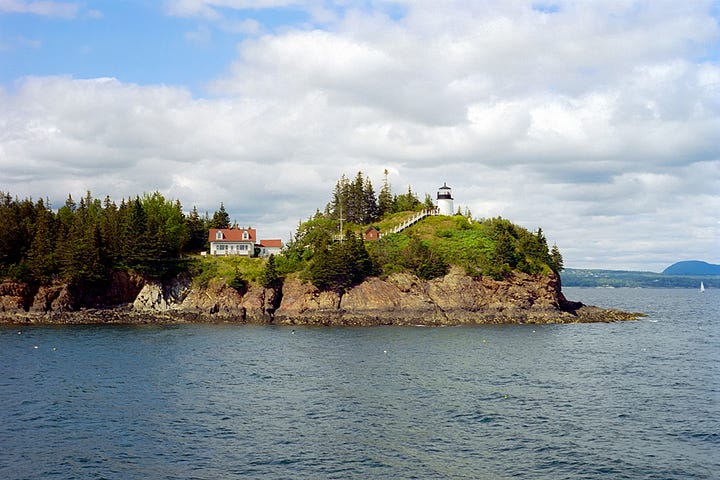
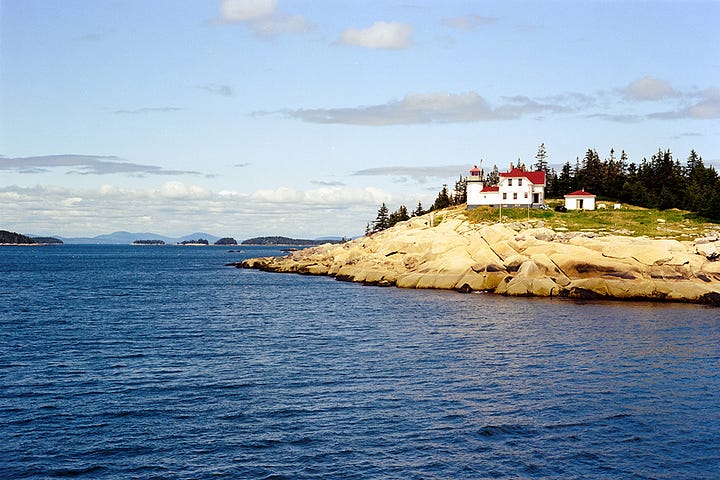
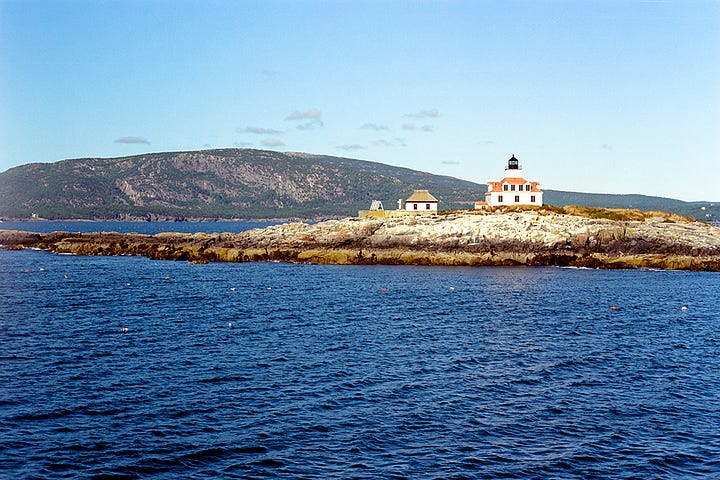
At the same time my processed film from last summer arrived from the developer. I was excited to scan them and see what I had captured nearly a year earlier. It was here that disappointment set in. The photographs were of inferior quality, riddled with obnoxious grain and poor colors. I had no idea what had gone wrong, (I later determined it was most likely due to the storage of the film, combined with the long delay in developing the film) but I knew this was not the quality that the film should have. So with resolve to get better results, I spent the next couple of weeks shooting a few different film stocks, both color negatives and slides.
The images I captured during this time were a mixed bag. A few of them I was very happy with, such as this image of a pre-sunrise sky over the Curtis Island Lighthouse in Camden. This scene was photographed on Fujifilm Velvia 50, a film stock renowned for its vibrant color, and though this might not have been the best application for the film, I was still quite pleased with the result.
When I nailed the exposure properly, the color in some of the images were quite nice. I stopped at a few lighthouses on an afternoon trip to Portland, and I captured these images.
What I quickly realized however, and perhaps should have much sooner, was that the method with which I normally expose my images on a digital camera was not going to work with film. Thanks to the amazing exposure latitude of today's digital sensors, I oftentimes will underexpose my images a bit, and brighten the scene up again in post processing. This allows me to retain details in the highlights of high-contrast scenes like sunsets or backlight. On film, this approach does not work, as shadow detail is quickly lost and overall color shifts occur due to the underexposure.
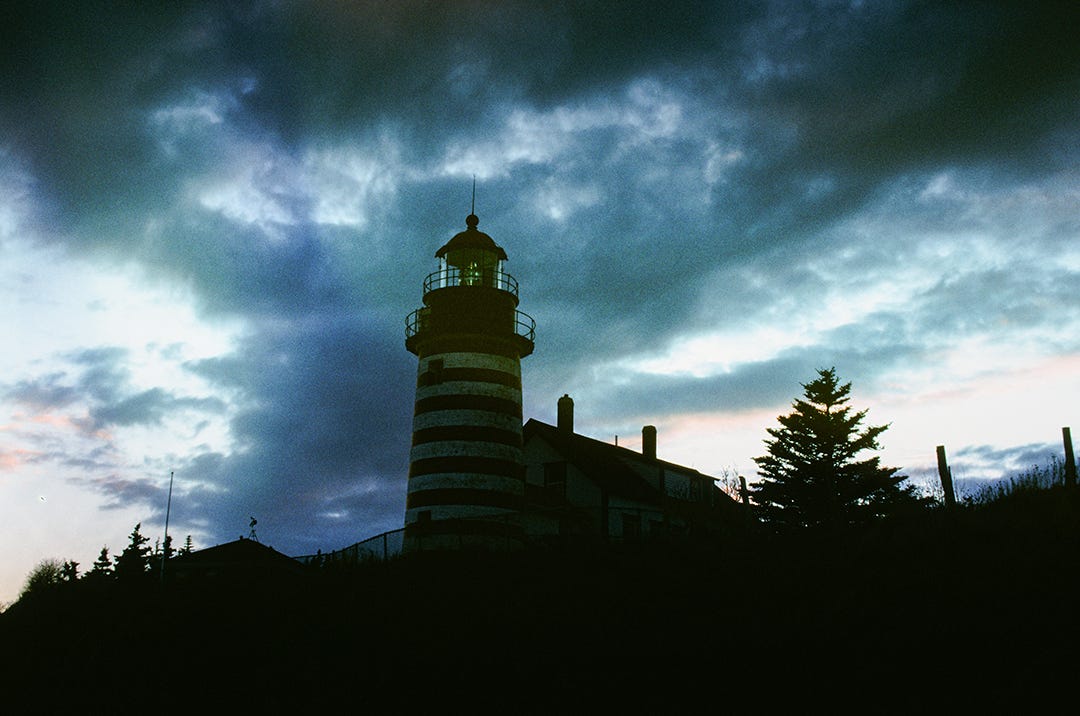
Despite this I continued shooting rolls of both negatives and slides, determined to learn all the nuances of working with film and the camera. I really love the hefty feel and the vintage looks of the Canon AE-1 Program. The all-manual controls of the camera were so new to me that it was exciting to take the camera out on a photoshoot. And the whirring click of the shutter was a pleasure to hear each time I fired off a shot.
One of my favorite images is this nighttime image of Owls Head Lighthouse that I captured in the fog. I was unsure if I would be able to capture this particular scene on film since I had to make an educated guess on the how long to expose the image. I was very excited when I got the film back from the developer and saw the image!
I continued shooting rolls into the early winter. However, on a frigid morning where the temperatures were below zero and arctic sea smoke filled the air, misfortune struck the camera. I had just finished shooting a roll of Kodak Pro Image 100 in Owls Head Harbor, and as I began to rewind the film back into the cassette, the rewind knob handle snapped off the camera. The film was only halfway rewound, and there was no way to open the camera up without ruining the film. After spending a few frantic minutes trying to reattach the handle with cold fingers that were hardly able to grip the small piece of metal, I was finally able to attach it just enough to finish rewinding the film. However I was pretty certain that it would be the last time I used this camera out in the field.
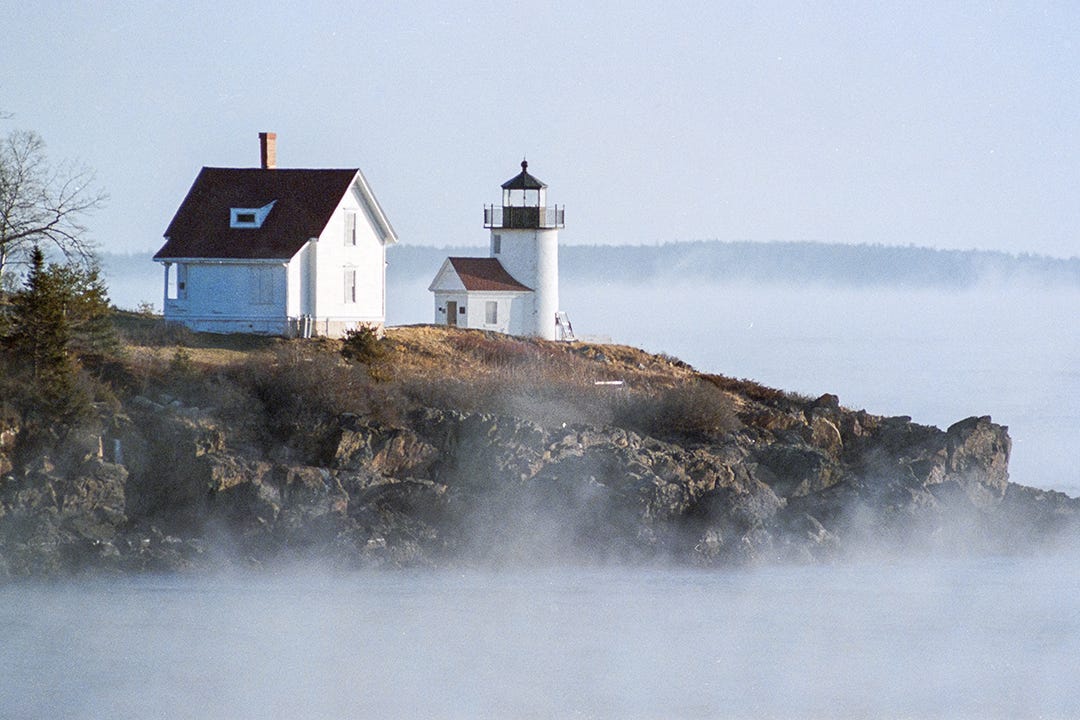
I hope you enjoyed some of the first images I captured with this film camera. I remember how much of fun I had getting into this new (for me anyway) medium of photography. Though I retired this particular camera from the field work, it has a place on my desk thanks to its vintage look. I did end up purchasing a few other film cameras to replace this Canon AE-1 Program, which I will be writing about in some upcoming newsletters. Keep your eyes out for those soon!
Thanks for reading!















Lovely shots!
I have a Canon AE-1 Program, well, it's my father's but he let's me use it. He bought it in Japan when it came out, so we've had it a while :). I shoot mostly black and white and now that I have read your post, I realised miss it very much - I left the camera with my dad a few months ago to have it checked as it was overexposing all shots... I need to follow up on that!
Good luck with your film adventures! Digital photography is pretty cool, but there is nothing like film!
Excellent series.